Objects
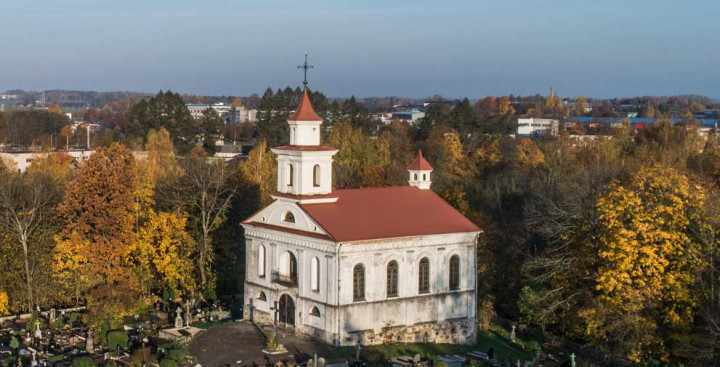
All Saints Chapel
St John the Baptist chapel is also called the All Saints Chapel or the Zubov Chapel. It is located in the old graveyard of Plungė City and was built in the Romantic Classical style. It is said that it was built by local craftsmen, funded by one of the Zubov counts and the parishioners.
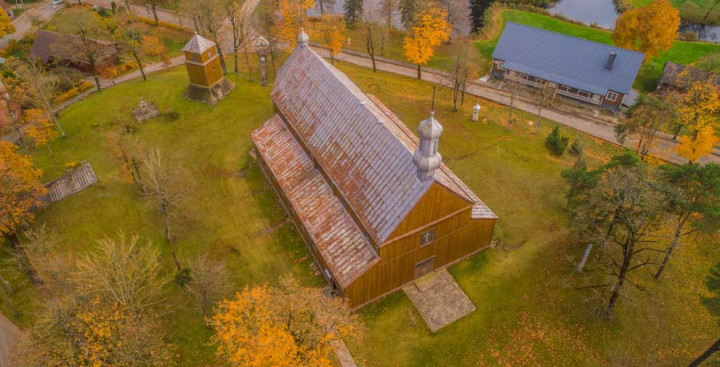
Alsėdžiai Church Building Complex of the Immaculate Conception of the Holy Virgin Mary
In 1421-1842, Alsėdžiai belonged to the Samogitian bishops, and from 1465 it became their permanent residence. The first church in Alsėdžiai was built in the 14th century. However, neither the original church nor the one that was built in the 17th century have survived to this day.
Price:
2 Eur
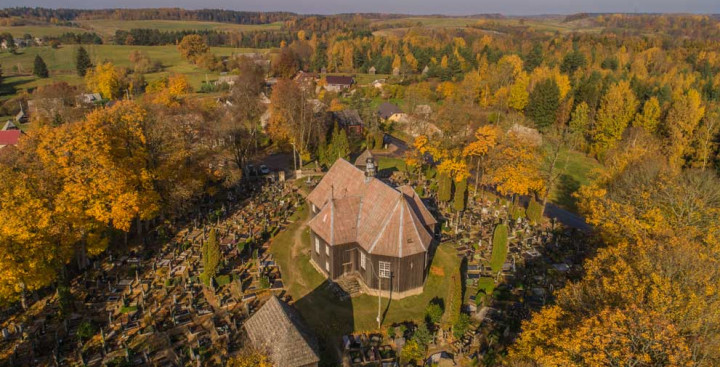
Beržoras St Stanislaus Bishop church building complex and the Beržoras ethno-architectural village (Chapels of the Cross)
In Beržoras Village (Plungė District) there are two highly significant cultural religious objects: St Stanislaus Bishop church building complex with the St Stanislaus church, bell tower and chapel – and the 14 Stations of the Cross chapels. It is said that a shepherd saw a painting of the Holy Virgin Mary in a treetop. The priests brought the painting down and took it to the Plateliai church; however, the painting disappeared from the church and reappeared in the same place in the treetop.
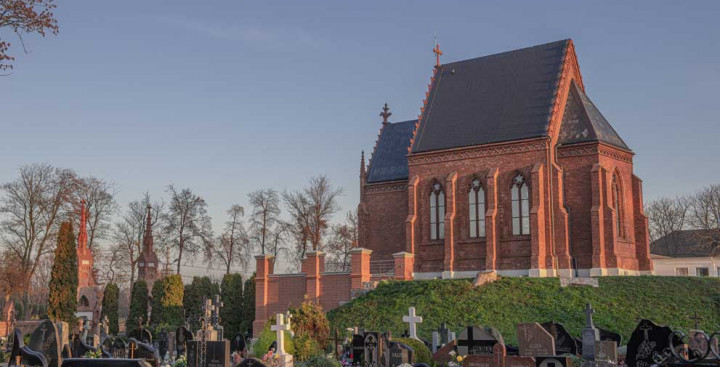
Count Tyszkiewicz Family Chapel-Mausoleum
The Count Tyszkiewicz Family Chapel-Mausoleum, along with the fence the eastern and western gates of the graveyard, rests in the site of the old graveyard of Kretinga Parish and forms a single complex. It is a state-protected cultural heritage object of regional significance.
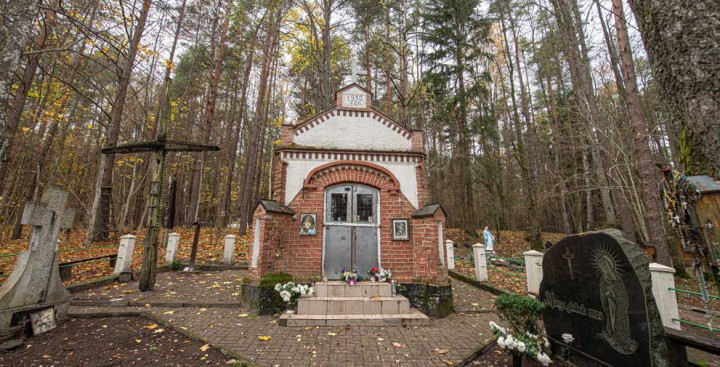
Erškėtynas Stream and Chapel
Erškėtynas Stream is located in Joskaudai Forest in Kretinga District Municipality, between the villages of Dimitravas and Lazdininkai. A nearby chapel that was built in honour of the Mother of God is often referred to as Erškėtynas Stream Chapel.
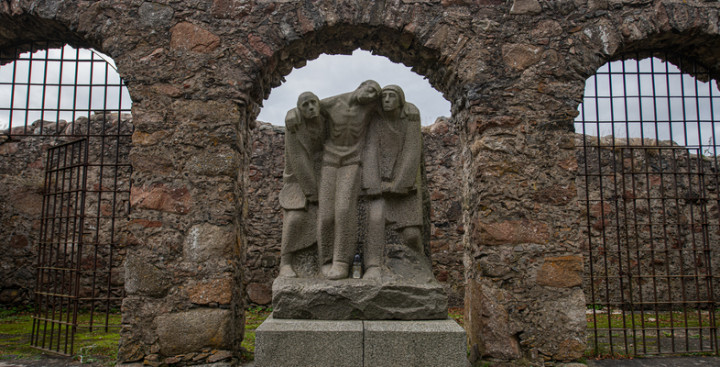
Forced labour camp in Dimitravas Village
In the 19th century, the family of Count Zubov family built an estate in Tarvydai Village, with cottages next to it for the servants of the estate. The village and the estate were named in honour of Count Dmitrij Zubov and were therefore called Dimitravas (it was re-named Tarvydai only in 1927).
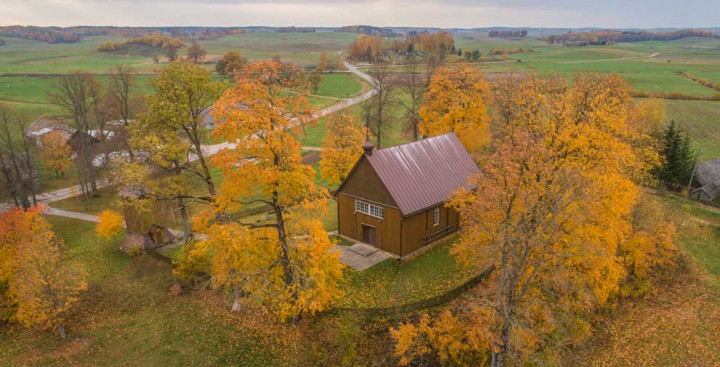
Gegrėnai Jesus of Nazareth church
The Gegrėnai Jesus of Nazareth wooden church was built in 1754, on the private land of the noble Venslauskis family. Since the church was initially built for the family of Mykolas Venslauskis, the building was not large (19.9 x 12.7 metres). At the beginning of the 19th century, the church was rebuilt in the same place and in an identical shape. On the front dome, a metal sun-shaped cross with the Venslauskis family crest was raised.
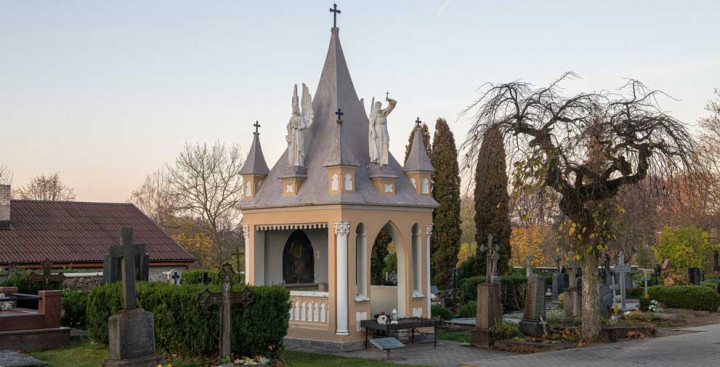
Jurgis Ambroziejus Pabrėža Grave Chapel
In the old graveyard of Kretinga, a Franciscan monk, preacher, botanist and doctor is buried – Jurgis Pabrėža, otherwise known as Father Ambroziejus. This man, who resided in Kretinga in 1771-1849, was well known amongst the residents of the surrounding area. That is why the guardian of the monastery, Augustinas Dirvelė, decided to build a small 15 square metre neo-Gothic style masonry chapel above his grave in 1933.
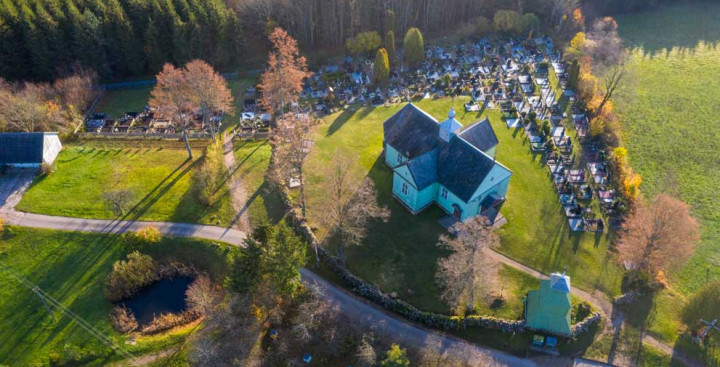
Kalnalis St. Lawrence’s Church
St. Lawrence’s Church is the most important cultural object of Kalnalis Village in Telšiai Diocese, situated on the right-hand bank of the Salantas River. The settlement, which is surrounded by the Salantas and Kūlupis Valleys, was established at the end of the 18th century, when the Grūšlaukė landowner Ignas Oginskis built St. Lawrence’s Church here in 1777.


